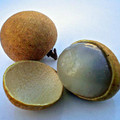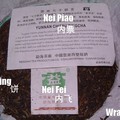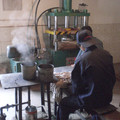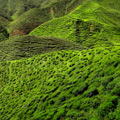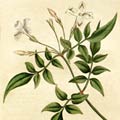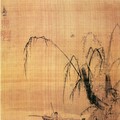Pu-erh tea
„This process was first developed in 1972 by Menghai Tea Factory and Kunming Tea Factory] to imitate the flavor and colour of aged raw pu-erh, and was an adaptation of wet storage techniques being used by merchants to falsify the age of their teas. Mass production of ripened pu'er began in 1975. It can be consumed without further aging, though it can also be stored to "air out" some of the less savoury flavors and aromas acquired during fermentation.“
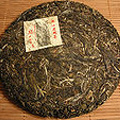
Quotes Tags: Pu-erh, Shu - Ripe Puerh
- Discussion: 0 comments
- Write a comment
Teas - Pu-erh
2014 Chawangpu "Lao Yu" Xiao Bing Cha
 1 review
1 reviewLao Yu (老妪) : old woman Material for this cake came from a small Bulang...
2013 Chawangpu "Gao Shan Liu Shui" Xiao
 1 review
1 review高山流水 [gāo shān liú shuǐ] :lofty mountains and flowing water; -- referring to the harsh...
2014 Jingmai Gu Shu Huang Pian
 1 review
1 reviewThis tea is from Jingmai Da Zhai, grown in Da Ping Zhang area, and it is considered to...
2001 CNNP Private Order 7542 Raw Puerh
 0 reviews
0 reviewsThis is a good example of CNNP "7542" production. This custom-made "7542" cake was...
Quotes - Pu-erh
„Pu'er; 普洱. Also Puerh, Pu - er etc. Pu'er is the modern pinyin spelling. The place name of the Old City of Pu'er through which pack horses transported the tea from Southern Yunnan. The names were recently changed; Pu'er is now Ning Er and nearby Simao has the adopted name of Pu'er. Locally, in spoken Chinese at least, Ning Er is still Pu'er. “
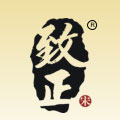
Video - Pu-erh
Theme
Teas
YiWu 2012 autumn
 1 review
1 reviewpressed by stone mold into 250 grams cakes, autumn maocha Massive sweetishness in the back of...
2006 Haiwan Certified Organic Pasha Mountain
 1 review
1 reviewTall and straight forest - Meng Pasha Pasha in the Aini language means tall and straight forest. According...
2014 Autumn Mengsong Bamboo Raw Puerh Tea
 1 review
1 reviewThis tea come from autumn 2014 harvest from Mengsong (Menghai), blend of tea from different villages, trees...
Tea by region
We will help you with tea selection.
Do you like quality loose tea?
We will help you to find the right one for you. Be inspired by tea ratings of other tea lovers. Rating stars could help you.


Review your cup of tea.
Review the tea you are drinking and help other tea lovers to find the right cup of tea.






 Shops
Shops Share on Facebook
Share on Facebook







